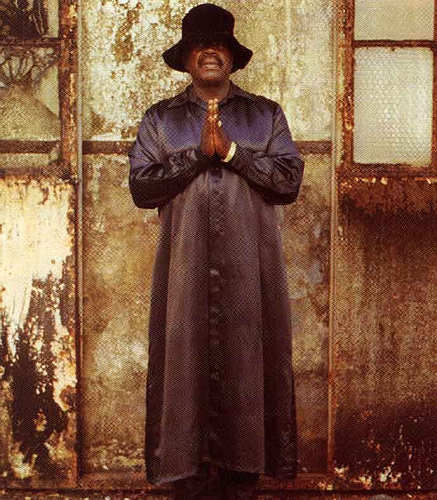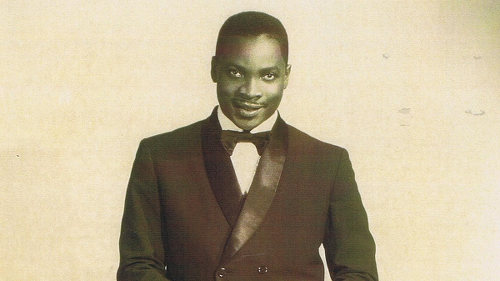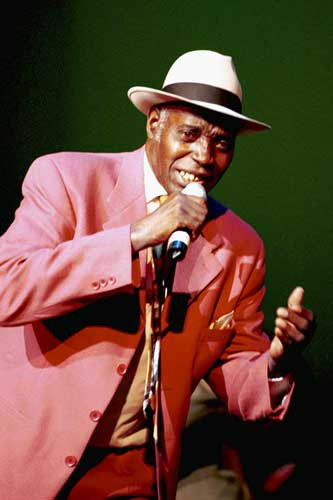What, I asked myself, might a Part IV of “Sing de Chorus” look and sound like if the dramatist decided to write one? What quality material would he have to draw on?
Would any such production be what a recent Express story about an upcoming concert called “an ode to the rich and colourful social commentary calypso to be found in the last half of the 20th century?”
I was seated in the Eric Williams Auditorium, watching and listening to inter alia David Bereaux, Chucky Gordon, Krisson Joseph and Lil Bits. The temperature was not particularly low but I shivered. The reaction—more of a shudder—was born not of cold but of dread, completely unsettled as I suddenly was at the thought of what has happened to the calypso over the last two decades or so.

(Copyright Maria Nunes/Lloyd Best Institute)
Set in the 1930s, in the early days when calypso was finding its feet, searching still for an identity. the first part of Rawle Gibbons’ trilogy captures the defiant, even rebellious spirit of the era. It was a time, as the programme’s Producer’s Note tells us, “framed between the turbulence of the Great Depression and the turmoil of World War II.”
“Yet,” Gibbons adds, “the calypso thrived.”
Thanks to his creative imagination—enhanced by the benefit of hindsight—we are allowed to see a fil conducteur, a unifying thread in what in fact was the hugely disparate produce of a slew of artistes who knew only that their art was their most potent weapon and that they therefore had to keep singing.
“Calypsonians were required to submit copies of lyrics to the police before singing songs,” the Note continues; “countless songs were banned, recordings dumped in the sea, calypsonians prosecuted and penalised.”
Growling Tiger (8), Atilla (5), Beginner (4) and King Radio (3) account for more than half of the production’s 38 songs. There as well, among the 14 calypsonians whose choruses we are invited to sing, are Caresser, Destroyer, Executor and Lord and Lady Iere.
Which, for me, is where the shoe pinches. How many calypsoes is Gibbon likely to find in the post-1970 era that are worthy of recall in a historical document of this sort? And, more tellingly perhaps, how many calypsonians?

(Copyright Abigail Hadeed)
The central character of “Ah Wanna Fall,” Part II of the trilogy, is not Lord Kitchener, seven of whose compositions are included in the 25 songs that speckle the production. Part II looks at the post-war period of the 1940s and 50s, “the good old days when,” as a review of the original production put it, “serious wit and a massive talent for double entendre and thinly veiled smut were a pre-requisite for membership in the calypso fraternity.”
No surprise then that it follows mainly Spoiler’s story.
If Parts I and II “placed the calypso art form on the international stage” and chronicled “the transitions of post-war Trinidad” respectively, Part III serves to record and salute “the triumphant rise of Sparrow in his struggle for social respect for the art and its performers.”
Another commentator adds that it “gives insight as to the difficulties a calypsonian faced during this era (when) there was the belief that calypso and, by extension, the calypsonian, were deserving of recognition.”
What then would be the central theme of a Part IV which covers the post-1970 era? And would he use the turn of the century as a cut-off point or take all five of the decades that the art form has endured since that watershed 1970 year.
Lacking Gibbons’ encyclopaedic knowledge and creative imagination, I find little to inspire me beyond the work of David Rudder. However, certain as I am that the storyline would follow his rise—and fall?—I doubt any of his five compositions which demand inclusion on the playlist would provide the title of the work. “Calypso Music” is simply too generic to merit consideration while none of “Bahia girl,” “1990,” “Hosay” and “Madman rant” is all-embracing enough for the purpose.

(Copyright Soulreflectionz.com)
Both King Austin’s “Progress” and GB’s “Calypso Rising” are non-starters unless their accuracy, their veracity is challenged with a question mark. Chalkdust’s “Calypso in the Hospital” arguably applies to a majority of the material but certainly not to its entirety.
A Part IV covering the period to 2000 might properly be styled “We like it so”—perhaps appropriately marking the slide into mediocrity by the man whom “Ten to One” acknowledges as the driving force behind the rise of the art form in the third quarter of the 20th Century. Its successor might then take its title from Stalin: “Feeling to party.”
As the tributes which poured in after his untimely passing make clear, Shadow’s seemingly timeless work demands representation in any work purporting to recapture and record the lived history of the calypso in that period.
Impossible to ignore too, I think, are Lord Shorty, Blue Boy/Superblue and Machel Montano. Shorty’s “Endless Vibrations” (1974) triggered a movement which, some will argue, took calypso far away from its roots whereas Blue Boy’s “Get something and wave” added impetus and direction—if not legitimacy—to the Shorty-inspired movement.
But the person who clearly converted that movement into the commercial success the bards of the 1930s craved is MM. Nine Road March wins between 1997 and the present speak to a clear understanding of the forces at work or at play in the genre and demand recognition for their author.

(Courtesy Sean Morrison/Wired868)
Master of the pan calypso, Kitchener had required only 13 years for his 10 wins but full 28 years had passed between Sparrow’s first and last, “Jean and Dinah” and “Doh back back.”
Thoughts are fine but, truth be told, any talk of a Part IV is premature. The reality is that, as Calypso History Month winds down, the “Sing de Chorus” bandwagon swings into San Fernando and Scarborough.
If we are lucky, there will be a second innings in the run-up to next Carnival and maybe even revivals of “Ah Wanna Fall” and “Ten to One.”
For those of us whose appetites have been whetted by the “Sing de Chorus” re-run, any such revival would be most welcome.
In the meantime, we might wish to consider praying for Gibbons to go back into full creative mode and grace us with a new rather than a recycled product.
And upping the ante with simultaneous sit-ins at NAPA and SAPA, we might lustily sing the chorus of Denyse Plummer’s “Nah leaving” until Gibbons announces production of Part IV, “Voices from the Ghetto.”

Editor’s Note: “Sing de Chorus” continues from 8pm on Saturday 27 October and 6pm on Sunday 28 October at the Grand Stand in the Queen’s Park Savannah, Port of Spain. Tickets are on sale at the venue.
Earl Best taught cricket, French, football and Spanish at QRC for many years and has written consistently for the Tapia and the Trinidad and Tobago Review since the 1970’s.
He is also a former sports editor at the Trinidad Guardian and the Trinidad Express and is now a senior lecturer in Journalism at COSTAATT.
 Wired868 Wired868 for smart sport news and opinion
Wired868 Wired868 for smart sport news and opinion






